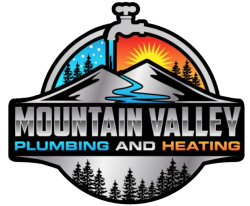Everyone knows that water is a precious natural resource. But not all homeowners are sure about what they can do around their homes to help conserve water. And many more are unsure that they are willing to make the sacrifices needed to convert to more environmentally-friendly plumbing fixtures and appliances. The excellent news for all of us is that innovations and technology have taken the sacrifice and hardship out of conserving water. And in return for your dedication to the planet, you will be saving some of your hard-earned money.
High Tech Toilets
Would you be shocked to learn that 30% of all water used in your home is flushed down the toilet? Toilets installed before 1982 used up to seven gallons of water per flush. That might not sound like a lot, but new ENERGY STAR dishwashers can clean an entire load of dishes with less water than a single old toilet needs for one flush.
New low-flow models now do the same job using only 1.6 gallons per flush. Doing some simple math that would reduce toilet water consumption from 70 gallons a day to only 16 if your family flushes just ten times each day. That saves 54 gallons of water a day or over 1,600 each month, without any sacrifice at all.
Saving Water In The Shower
Understandably, you are willing to use less water flushing toilets. But the thought of shortening your shower could be too much to ask. The average person enjoys seven minutes of bliss each day showering and is unwilling to give up even a few seconds. So why not attack the problem from another angle.
Standard showerheads have a flow rate of 2.5 gallons a minute. In seven minutes, that uses 17.5 gallons of water. Again, it doesn’t sound too bad. What if you could reduce the flow to 1.8 gallons per minute? That would save almost five gallons per shower or over 1,800 gallons per year. And before you worry about the water pressure, these new showerheads use an aerator to add air to the water. It keeps the shower flow very consistent and as enjoyable as a higher flow rate.
Now Let’s Look At Kitchen Faucets
The average kitchen faucet has a flow rate of 2.2 gallons per minute. The flow rate of a newer low-flow faucet for your kitchen is 1.5 gallons per minute or less. These units use the same aerator technology as the low-flow showerheads so that the water will rinse dishes as efficiently as ever. But you will be saving 3.5 gallons of water for every five minutes that your kitchen sink is running.
Going Tankless
How long do you wait for hot water to shower? Even if you have a low-flow showerhead, you are wasting close to two gallons per minute. The solution is a tankless water heater. These compact and ultra-efficient units heat the water as it flows through the pipes to your faucet or shower. There is no more waiting for hot water.
Equally as impressive as instant hot water is the drastic energy savings. Because there is no tank of water constantly being heated and reheated, a tankless water heater uses 24% to 34% less energy than a traditional water heater. And with your water heater being the second-largest consumer of power in your home behind your HVAC system, that could save you a lot of money each year.
Call (406) 823-3680 to learn more about going green. A Mountain Valley Plumbing & Heating licensed plumber can visit your home and provide a cost estimate for fixtures to save you water and money.

